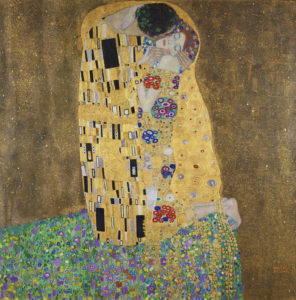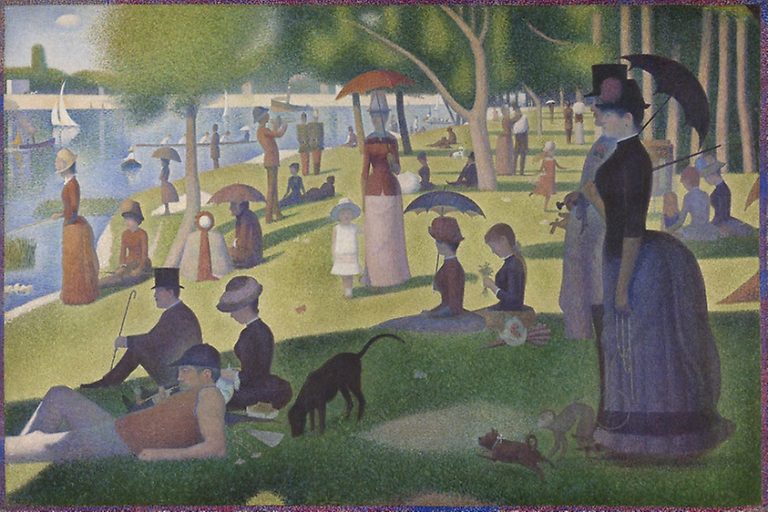
The Kiss by Gustav Klimt 1908-1909
Walking around a museum, admiring the latest brush techniques, the splash of colors, the strange shapes of a sculpture, seems like an ancient memory in November 2020. With the recent global health crisis, the lockdowns and constant anxiety, visiting a museum is way behind on people’s priority lists. More than that, art education in general is also in crisis. Art subjects are inherently positive in education, as they encourage self-expression and creativity, but can also improve well-being and health as a way to relieve stress from other subjects. Furthermore, studying art helps to develop critical thinking skills and the ability to understand and analyze the world around us.[1] In sum, access to art and culture is part of the ‘basic skills’ package, and can complement fundamental skills such as reading and writing.
To combat these issues, the cultural sector has done a tremendous work in trying to bring art back into people’s lives, and in the classrooms. Numerous museums in Europe, but also around the world, have opened their collection to digitalization, providing virtual tours of exhibitions, offering online interactive games for students, virtual reality experiences, pedagogical dossiers of famous works of art, painters, sculptors, and other artists, as well as many other digital tools.
Indeed, adapting to the current time is paramount for museums trying to reach a wider audience. In that sense, digital tools such as the Google Arts & Culture platform for example, are game changers. There, more than 2000 museums have participated in sharing their collection and creating a large database of cultural institutions and artworks ‘to bring the world’s art and culture online so it’s accessible to anyone, anywhere’[2].
However, museums and galleries, despite their best efforts to focus on inclusion and accessibility, have sometimes failed a discreet portion of the population with special needs. Image accessibility, for example, is often focused on visually impaired people, but does not take into account people with little or no reading skills, people with specific learning disorders (SLD) or other disabilities, and people with little or no contact with European culture.

A Sunday Afternoon on La Grande Jatte by Georges Seurat 1884-1886
This is where the Erasmus + funded project ‘Team of Art’ comes in. With this project, we aim to bring art and culture to a group of neglected learners. The goal is therefore to develop a digital platform, easy to use and DYS friendly to combine access to European culture with the acquisition of basic skills for our target audience made of people with SLDs, small or non-readers, and other non-European culturally aware groups.
For the learners, firstly, the digital exhibition will gather more than 120 animated and scrolling works of art from famous European artists covering a wide range of periods, art style and techniques. Secondly, ‘Team of Art’ will provide a useful glossary of key art terms that are often unclear, too technical and complicated for learners with learning disabilities or little reading skills. This glossary will be illustrated and supported by videos in sign language for our hearing impaired or disabled audience. The interactive platform will be designed with the needs of our target audience in mind, meaning that it will be accessible and inclusive to all. These tools will be developed according to the principle of ‘easy to read and understand’ set at a B level by the Common European Framework of Reference for Languages (CEFR).
For the educators, trainers and professionals, a series of 10 pedagogical dossiers, 30 practical sheets and a pedagogical guide for implementation will be provided within this project. By tailoring both to the learners and the educators, we hope to contribute to the promotion of major works of European cultural heritage to audiences with little or no access to culture and whose basic skills (reading, writing) are not or poorly developed, but also to encourage innovative forms of cultural mediation and training using digital tools.
To that end, six organizations will work together. Les Apprimeurs (France), My Artists (Greece), Open Culture (Spain), Mcrokosmos (Italy), Logopsycom (Belgium), and European Development Foundation (Bulgaria) will set sails for a two year journey to bring European art heritage to our target audience. The progress of the project will be communicated on our website and various social networks, and concluded with large events planned all throughout Europe in 2022!
Resources:
[1] https://www.tate.org.uk/art/talking-point/why-study-art
2] https://artsandculture.google.com/
Project website : team-of-art.eu/![]() Follow the project on Facebook: @Logopsycom
Follow the project on Facebook: @Logopsycom
#teamofart #erasmusplusproject
Our partners are Les Apprimeurs (France), My Artists (Greece), Associacio Programes Educatius Open Europe (Spain), “Microkosmos” Associazione Culturale Italo-Ellenica per la Formazione – (Italy) and European Development Foundation (Bulgaria)

